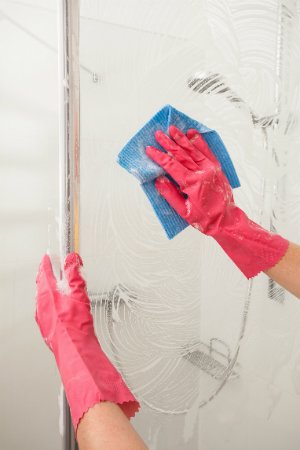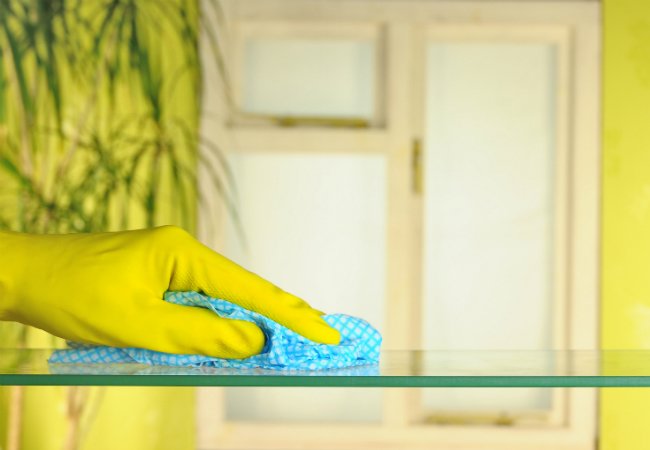We may earn revenue from the products available on this page and participate in affiliate programs. Learn More ›
Commonly used to construct everyday items from shower enclosures to tabletops, plexiglass (also known as acrylic) offers many advantages over actual glass. Though the two share a similar appearance, plexiglass is lighter, tougher to crack, and easy to cut to size for use in a variety of applications around the home. The transparent acrylic material also boasts a crystal-clear benefit of even better transparency than its competition with less glare. What’s more, it’s incredibly easy to maintain that prized transparency—if you simply know how to clean plexiglass, of course.
Tools & Materials
Bobvila.com may earn a commission from purchases made through these links.

Step 1
Begin by removing excess dust or dirt from the surface of the plexiglass, but not with your usual duster. Making direct, dry contact with surface particles using your hand or a cloth can actually grind them into the material itself.
Instead, use air to clear the surface, either by blowing across the pane (close your eyes first!) or briefly using a blow dryer set to its coolest, lowest setting—never, ever heat plexiglass. If you choose to go with the latter method, hold the blow dryer at a 45-degree angle several inches away from the plexiglass and run side-to-side down the surface.
Step 2
Once excess grime has been removed, spray a nonabrasive acrylic cleaner, such as Brillianize (buy on Amazon) or Novus No. 1 (buy on Amazon), onto a one- or two-foot-square section of plexiglass. (For an on-hand alternative, a solution of mild dish soap and water works well too.)
Once the cleaner has been applied, use a soft, lint-free microfiber cloth—or, in a pinch, a disposable diaper—to gently wipe the surface down, again being careful to make contact only with the portion of the surface that already has cleaner on it. Continue applying the cleaner and wiping it off in small sections until you’ve finished the entire surface.
Step 3
If you’re in the mood to be ultra-thorough, you can rinse out the cloth, soak it in plain water, and go back over the plexiglass once more. This step isn’t critical, but it might help you clean anything you missed. If it’s possible to simply run water over the surface without causing a slip hazard—for example, by spraying a shower nozzle on a low setting on the inside of a shower enclosure—you’ll ensure a brighter shine. Always remember: The less pressure, the better.
Above all, as you care for your plexiglass, be sure to avoid the three A’s: ammonia, abrasives, and aromatics. For all its conveniences, plexiglass is a sensitive material. It’s prone to scratching and tends to hang on to scented solutions used on its surface.
Skip all-purpose cleaners when you clean, which can do more harm than good, for something even more mild or specialized. And, as already mentioned, never wipe down plexiglass with a dry cloth, or brush over it with a bare, dry hand.
So long as you keep these restrictions in mind and maintain a simple, straightforward cleaning regimen, you should be able to keep your plexiglass windows and shower enclosures scratch-free and spotless for years to come.

